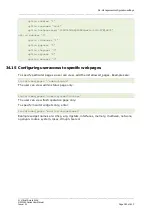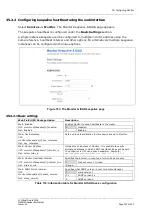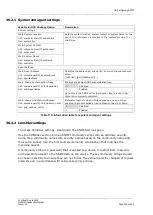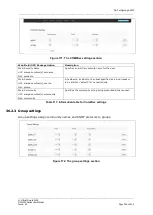
_______________________________________________________________________________________________________
_______________________________________________________________________________________________________
© Virtual Access 2018
GW2020 Series User Manual
Issue: 2.1
Page 358 of 423
36
Configuring SNMP
SNMP (Simple Network Management Protocol) is an internet-standard protocol for
managing devices on IP networks. SNMP exposes management data in the form of a
hierarchy of variables in a MIB (Management Information Base). These variables can be
queried individually, or in groups using their OIDs (Object Identifiers) defined in MIBs. In
addition, information from the router can be pushed to a network management station in
the form of SNMP traps.
36.1
Configuration package used
Package
Sections
snmpd
access
agent
com2sec
constant
exec
group
heartbeat
informreceiver
inventory
inventory_iftable
monitor_disk
monitor_ioerror
monitor_load
monitor_memory
monitor_process
pass
system
trapreceiver
usm_user
view
The SNMP application has several configuration sections:
System and Agent
Configures the SNMP agent.
Com2Sec
Maps SNMP community names into an arbitrary security name.
Group
Assigns community names and SNMP protocols to groups.
View and Access
Creates views and sub views of the whole available SNMP tree and grants specific
access to those views on a group by group basis.
usm_user
Define a user for SNMPv3 USM
Trap receiver
Address of a notification receiver that should be sent SNMPv1 TRAPs and
SNMPv2c TRAP2s.
Inform receiver
Address of a notification receiver that should be sent SNMPv2 INFORM
notifications respectively
36.2
Configuring SMNP using the web interface
In the top menu, select Services -> SNMP. The SNMP Service page appears.
Figure 170: The SNMP service page
















































